And with him.
I took my boat out yesterday.
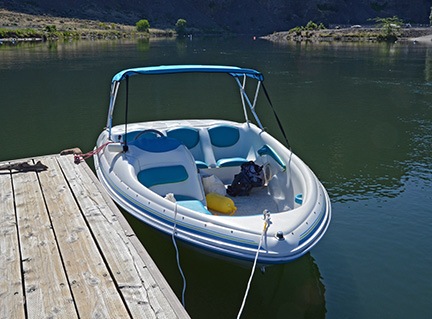 It isn’t much of a boat: 1995 Sea Ray F-16 Searayder. It has a jet ski engine. Nice in shallow water (until you suck up weeds or sand). Holds up to 5 people or up to 750 pounds. (Hell, my helicopter can carry more weight.) I bought it at the end of last year and made the mistake of leaving it up in Washington. I should have left my RV, the mobile mansion, which costs a fortune to tow 1,200 miles at 6-8 miles per gallon. We didn’t use the mobile mansion in Arizona (although we almost did), but I know we would have used that boat a lot.
It isn’t much of a boat: 1995 Sea Ray F-16 Searayder. It has a jet ski engine. Nice in shallow water (until you suck up weeds or sand). Holds up to 5 people or up to 750 pounds. (Hell, my helicopter can carry more weight.) I bought it at the end of last year and made the mistake of leaving it up in Washington. I should have left my RV, the mobile mansion, which costs a fortune to tow 1,200 miles at 6-8 miles per gallon. We didn’t use the mobile mansion in Arizona (although we almost did), but I know we would have used that boat a lot.
Just another one of my mistakes.
This Season’s Boat Outings
This was my fourth outing this season — and the first in more than two months. The first outing, in early June after I had it repaired (read about that) was just to learn how to put it in the water, start it, drive it, and get it back out of the water. If you’ve never managed a boat by yourself, you might not appreciate how tricky this could be. I came up with a system that works for me.
The second outing was a trip from Crescent Bar up to Spanish Castle — or where Spanish Castle used to be — and a long drift back down the river. That trip was great because the water was as smooth as glass and I could get the boat up to its top speed of about 35 miles per hour.

The third outing, later in the month, was with my friend Jim and covered pretty much the same territory. It was great to get out on the water with a friend.

Yesterday’s Outing
I didn’t take the boat out for two months after that. There are a few reasons, the biggest being that I had to finish a book I was working on. I couldn’t play with that work hanging over me. Unfortunately, the book took two months to finish — which isn’t like me at all — mostly because of the distraction of my upcoming divorce. I simply couldn’t concentrate.
Oddly, I’d really looked forward to taking the boat out with Mike. In May, he’d talked about coming up with our dog, Charlie, and spending the summer with me. I was looking forward to going out in the boat with the two of them on nice days when we were both finished with work. I even thought about camping on West Bar, across from Crescent Bar; I had all our good camping gear with me and it would have made an easy overnight trip.
But by the end of June, it was pretty clear that that would never happen.
Even though my work on the book had been done for about a week, I’d been putting off taking the boat out. I honestly didn’t feel like going out alone. But I loaded it up today, hooked it up to the truck, and dragged it to the hydropark where there’s a boat ramp just upriver from Rock Island Dam. I’d never launched there, but I’d scouted it out on a walk with Penny the day before. It was a nice ramp with a floating dock that had lots of cleats. Cleats are important for securing a boat when you’re launching it by yourself.
 I backed the boat in and launched it without much trouble, then pulled it around to the other side of the dock so I’d be out of the way in case anyone else wanted to launch or come back in. I secured it with two ropes, then parked the truck and trailer, put a leash on Penny, and came back out to the boat. I put Penny in and stepped in after her. Then I put on her life jacket, fastened the leash to it, and fastened the leash to one of the boat’s handholds. This was the first time I’d taken Penny on the boat — I got her at the end of June as a sort of birthday gift to myself — and I was glad to see that she didn’t have a problem with the silly life jacket I’d bought her.
I backed the boat in and launched it without much trouble, then pulled it around to the other side of the dock so I’d be out of the way in case anyone else wanted to launch or come back in. I secured it with two ropes, then parked the truck and trailer, put a leash on Penny, and came back out to the boat. I put Penny in and stepped in after her. Then I put on her life jacket, fastened the leash to it, and fastened the leash to one of the boat’s handholds. This was the first time I’d taken Penny on the boat — I got her at the end of June as a sort of birthday gift to myself — and I was glad to see that she didn’t have a problem with the silly life jacket I’d bought her.
The boat didn’t start right away, which really didn’t surprise me much. But then it came to life. I let it idle with the choke on for a short time, then cast off the front rope. I got back into my seat, cast off the other rope, pushed the choke back in, and pushed the throttle forward. We eased out into the Columbia River.
It wasn’t long before I picked up speed. I cruised at about 28 miles per hour (according to a GPS app on my phone) straight up the river. I’d learned that one way to save gas and have a nice quiet ride was to motor upriver, cut the engine, and drift back. I took it all the way up to the Rocky Reach Dam — or as close as I felt comfortable going. The water had some weird currents on the downriver side of the dam and I didn’t like the look of them.
With the engine off, it got nice and quiet. I turned on the stereo, which I’d had installed back in June. It had a weird little drawer for holding an iPhone or iPod. You’d plug in your device and the stereo would charge it and play music. You could still use a Bluetooth earpiece for the phone if a call came in. I bought the stereo so I could listen to music and not have to worry about my battery dying in my phone when I was out during a cherry contract.
 Penny, who’d been crouching under the steering console out of the wind, came out to see what was up. I unfastened the leash and gave her free run of the boat. She seemed only mildly interested. Later, I put the leash back on and sat her up on the boat’s engine lid. She hung out there for a while, sniffing around, then seemed to get bored so I put her back in the boat and took the leash off again. She settled down on the carpet to nap.
Penny, who’d been crouching under the steering console out of the wind, came out to see what was up. I unfastened the leash and gave her free run of the boat. She seemed only mildly interested. Later, I put the leash back on and sat her up on the boat’s engine lid. She hung out there for a while, sniffing around, then seemed to get bored so I put her back in the boat and took the leash off again. She settled down on the carpet to nap.
It was warm out, with the sun filtered through high, thin clouds. I was wearing my bathing suit — which fits better now than it has in years — and a pair of men’s nylon swim shorts. I decided to take in some sun so I stripped off the shorts and stretched out on the engine lid in the sun. I lay there like that for a long while, listening to music through surprisingly good sounding speakers and feeling the breeze against my hair and skin as the boat drifted down the middle of the Columbia River at about 3-1/2 miles per hour.
It was very pleasant.
Boating with Mike
Unfortunately, every time I relax and clear my mind of whatever tasks I’m doing, memories of the past 29 years of my life and the way my marriage ended creep into my mind. This time, those thoughts focused around boating.
Mike and I had been boating many times in those 29 years.
One of my earliest memories of us together on a boat is on a Lake George camping trip with a bunch of friends. I think Mike and I had been together only a month or so at the time. The campsites could only be reached by boat, so we’d rented a few small motorboats to get there. On one ride after we’d set up camp, Mike’s brother was at the controls and drove us into a weird little set of waves. The boat went up and down and every time it went down, water came over the bow. It got so bad that we had to take it into shore, pull the engine off, and dump the boat out. We were that close to sinking. Mike’s brother got a lot of grief for that one.
We also went canoeing with friends on the Delaware River. I remember one trip distinctly because Mike’s brother and sister-in-law (now separated) had, for some reason, switched partners with another couple (now divorced). The canoe with Mike’s brother and the other woman — I think her name was Patty — capsized at the first rapid. Patty lost her glasses and was miserable for the rest of the day.
And then there were the boating trips with my dad. My dad had a fast boat he’d put into the Hudson River at the George Washington Bridge. He’d then take it out for a spin around Manhattan Island. (We did this quite a bit when I was a kid, but in smaller boats.) I clearly remember Mike and my dad and I standing up behind the boat’s windscreen with our faces out in the wind. The water was like glass on the Harlem River and my dad must have had that boat up to 70 or 80 miles an hour. We were passing cars on the Harlem River Drive. The wind was pushing the face of my skin back and I was laughing, having the time of my life.
My mother and stepdad also had a boat. We’d go boating with them out on the Long Island Sound and then later, when they moved to Florida, on the Intracoastal Waterway near St. Augustine. I remember a boat ride in a bad storm on the Long Island Sound. Scary exciting! On another ride in Florida, I remember seeing dolphins jumping alongside the boat. It was magical.
We did a rafting trip down the Colorado River with our friends Fred and Cheri (still married). Seven days, camping every night. We made friends with a lot of people, including Ed, who just happened to be a geologist. Can you imagine floating down through the Grand Canyon seated next to a geologist? I got terrible sunburn and was dehydrated every day but I still had an amazing time.
And then there were the house boating trips. We did two of them on Lake Powell. The first was amazing — definitely one of the top 10 vacations in my life. We went with Fred and Cheri and Oscar and Lily (now separated but living under the same roof). We cruised from Halls Crossing down to Dangling Rope Marina and back over the course of a week, exploring side canyons and hiking in the red rocks. We came in for fuel at Dangling Rope a little too fast and bashed the boat into the dock — fortunately, no damage. Poor Lily completely wigged out when she discovered that the pay phone at the marina wasn’t working. She actually found someone to place a call back to New York for her using a shortwave radio. The second, shorter houseboat trip wasn’t nearly as good. We went with my mom and stepdad and I don’t think they really appreciated the remote beauty of Lake Powell. Oh, well.
For Mike’s 40th birthday, I rented a patio boat on Lake Pleasant near our Wickenburg home. I invited a bunch of friends to join us for an afternoon on the lake. I bought a dozen lobster tails straight from Maine and we cooked them up on the beach. We almost swamped the boat on the way back, going too fast with too many people up front.
And then there were the jet skis. I went to a motorcycle shop to buy oil for my motorcycle one day and wound up buying a pair of used Yamaha Waverunners in excellent condition. We’d take them out on Lake Pleasant and use them like boats, motoring to a distant shore for a picnic and a swim. We’d wear our life jackets with our legs through the arm holes so they were like seats and we’d float around, keeping cool.
We took the jet skis out to Lake Havasu once and rode them all the way up to the Avi Casino Hotel on the border of Arizona, Nevada, and California — maybe 50 miles through Topok Gorge, the Needles area, and the small towns beyond. We spent the night at the hotel there and, in the morning, found our two jet skis beached. We had to wait until power demand caused enough water to be released from the dam upriver to float them again. Then we went up to the dam at Laughlin, bought some fuel, and sped all the way back. What a great overnight trip that was! A real adventure.
Then there was the trip to Big Bear Lake. We’d debated flying there in his plane or my helicopter and finally wound up just driving in my Honda S2000, which was pretty new back then. I can’t remember where we stayed, but I do remember the dinky little motorboat we rented for a tour around the lake — mostly because of this picture, which I used to carry around on my phone and iPad:

And I’ll never forget the overnight trip we did with Mike’s friend Leon and his wife (now divorced) in Leon’s huge catamaran. We sailed down the coast of New Jersey all the way to Atlantic City. I remember sitting out on the net with Mike over the front of the boat, in the wind and the spray with the full sails snapping behind us. We docked, went into a casino for dinner, and later returned to the boat where we slept in our own narrow cabin. All night, the boat rocked and the hardware on the ropes clanged gently. The next day, we sailed back.
Time to Go
As I lay out in the sun in my bathing suit out on the engine lid of my little boat, drifting down the Columbia River with my little dog, memories of all these boat trips flashed through my mind — like so many other memories from the past 29 years have been doing for the past two months. After a while, it became too much to bear.
I put my shorts back on and started up the engine. I motored all the way back to my launch point at full throttle while Penny cowered behind the steering column again.
It took two tries to dock the boat by myself. Not bad, considering I was so out of practice and there’s a current at the dock.
A while later, I was driving back to the mobile mansion with Penny beside me and the boat in tow. I was still thinking about all those boat rides, wondering whether Mike remembered them, too. Or had he somehow managed to erase the memories of the 29 years we had together?
Mike won’t read this blog post. He never reads my blog. He was never really interested in the things I blogged about.
But his lawyers will read it. And they’ll print it out and bring it to court with them as evidence. Of what, I don’t know. My fond memories of a life with a man I loved? That’s the only thing I’ve written about here.
A divorce might dissolve a marriage. But unfortunately, it can’t eliminate everything that went before it.
Next time I go boating, I’ll bring a friend.

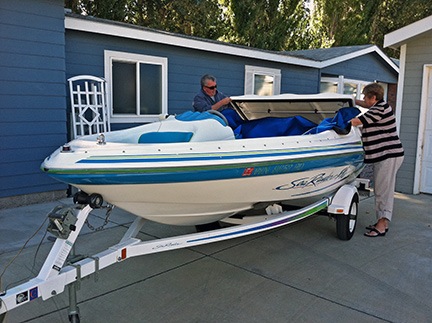
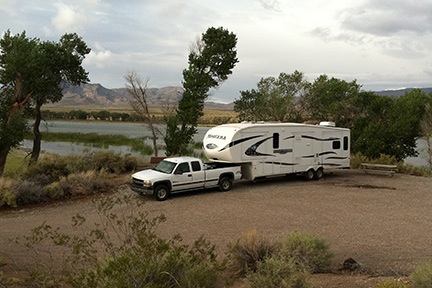

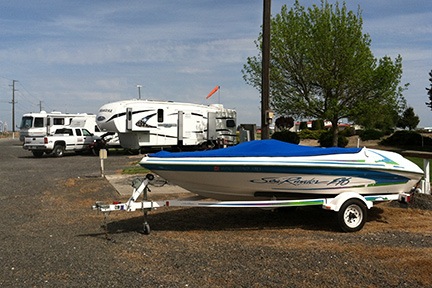
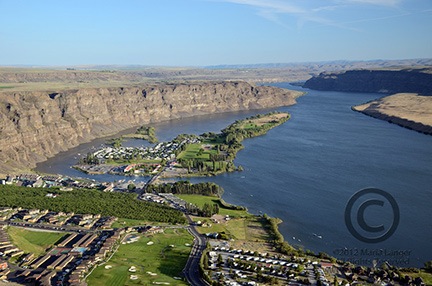
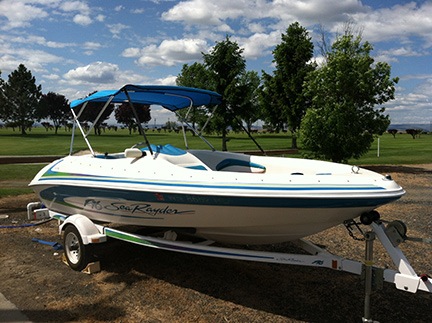
 And there it remains.
And there it remains.
 I also sent the photo you see here to Twitter. I get around a bit and sometimes tweet photos of the things I see and do. It’s part of how I participate in social networks. Along with the photo, I tweeted:
I also sent the photo you see here to Twitter. I get around a bit and sometimes tweet photos of the things I see and do. It’s part of how I participate in social networks. Along with the photo, I tweeted:
